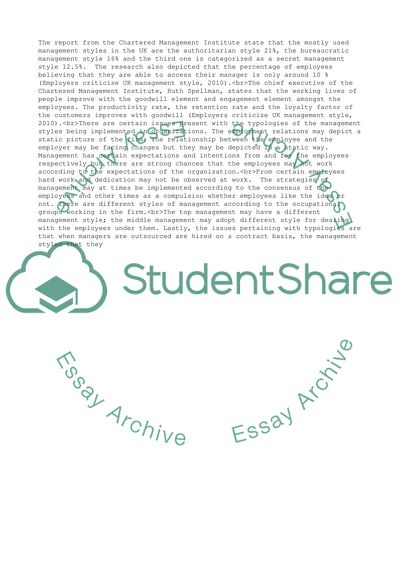Cite this document
(What do you understand by the term management style in employee Essay - 1, n.d.)
What do you understand by the term management style in employee Essay - 1. https://studentshare.org/management/1761504-what-do-you-understand-by-the-term-management-style-in-employee-relations-how-useful-is-the-term-in-understanding-the-dynamics-in-employee-relations
What do you understand by the term management style in employee Essay - 1. https://studentshare.org/management/1761504-what-do-you-understand-by-the-term-management-style-in-employee-relations-how-useful-is-the-term-in-understanding-the-dynamics-in-employee-relations
(What Do You Understand by the Term Management Style in Employee Essay - 1)
What Do You Understand by the Term Management Style in Employee Essay - 1. https://studentshare.org/management/1761504-what-do-you-understand-by-the-term-management-style-in-employee-relations-how-useful-is-the-term-in-understanding-the-dynamics-in-employee-relations.
What Do You Understand by the Term Management Style in Employee Essay - 1. https://studentshare.org/management/1761504-what-do-you-understand-by-the-term-management-style-in-employee-relations-how-useful-is-the-term-in-understanding-the-dynamics-in-employee-relations.
“What Do You Understand by the Term Management Style in Employee Essay - 1”. https://studentshare.org/management/1761504-what-do-you-understand-by-the-term-management-style-in-employee-relations-how-useful-is-the-term-in-understanding-the-dynamics-in-employee-relations.


